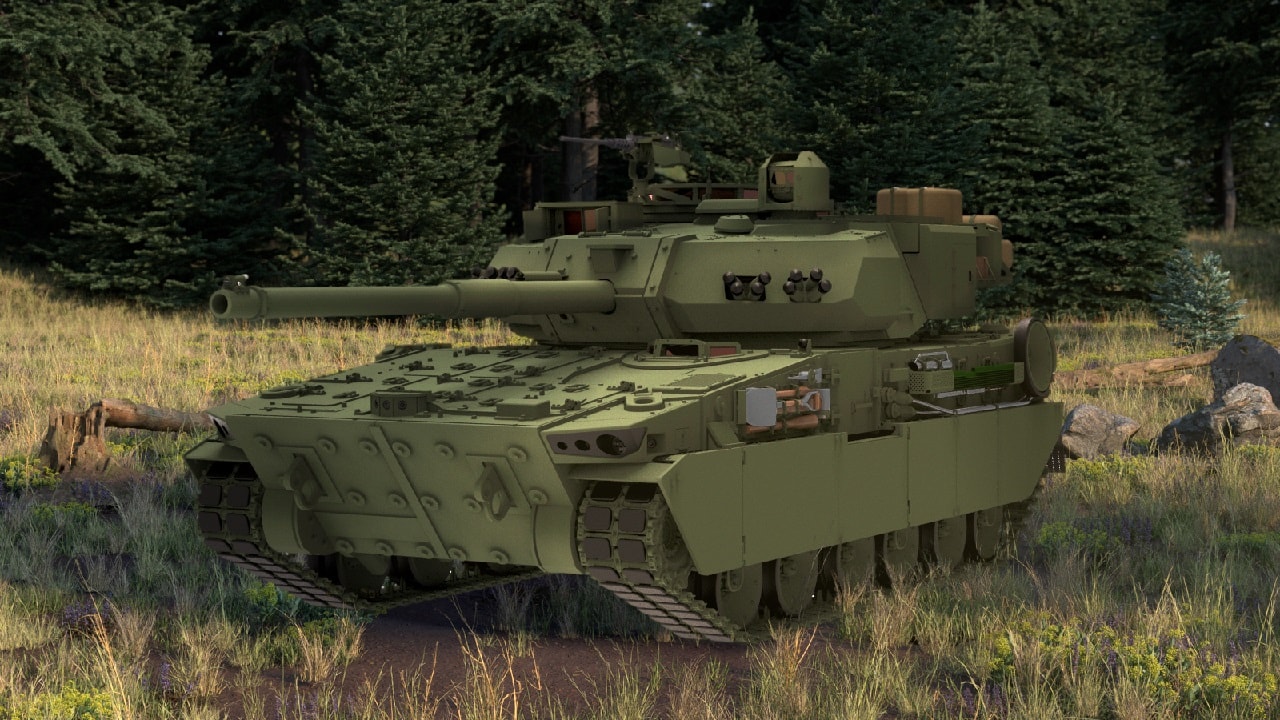Mobile Protected Firepower, Explained: In late June, the U.S. Army selected General Dynamics Land Systems “to build a light tank meant to improve mobility, protection and direct-fire capabilities for Infantry Brigade Combat Teams,” Jen Judson reported for Defense News. The new tank program, known as the Mobile Protected Firepower (MPF), will be the Army’s first light tank since the Cold War. GDLS hopes to deliver the MPF in about eighteen months. Forty-two tanks (a full battalion) are expected to be delivered before the fourth quarter of fiscal year 2025. Full-scale production of the new tanks should commence sometime in 2025.
Mobile Protected Firepower – General Dynamics Land Systems Won the Contract
The Army selected the GDLS MPF over BAE Systems’s tank prototype. Both prototypes, which were significantly different, were tested thoroughly. The MPF most impressed Army evaluators, however, offering “a new, lightweight chassis with a high-performance power pack and an advanced suspension, combined with a turret featuring the latest version of the fire control system found in the Abrams main battle tank,” Judson reported.
The MPF is an entirely new platform. “While informed by our experience of building a number of innovative ground combat vehicles, the MPF was designed from the ground up as a completely new vehicle,” said Kevin Bonner, Global Chief Technology Officer for General Dynamics Land Systems. “From the suspension to the propulsion and electronics, the MPF represents the U.S. Army’s next generation of combat vehicles.”
BAE’s design, on the other hand, was an updated M8 Buford Armored Gun System (AGS) light tank. The BAE AGS was developed through the 1980s – but canceled in 1996. “The M8 had been slated to replace the service’s last light tank, the M551A1 Sheridan, a Vietnam War-era design that had an overly complex 152mm gun/missile launcher as its primary armament,” Joseph Trevith reported for The War Zone.
Army evaluators had decided not to move forward with the BAE prototype months before the decision to produce the MPF was announced last month. Apparently, BAE had drastic issues in just delivering its prototypes to the Army for evaluation, making the decision easy. “Army officials said the service opted to move forward with GDLS because it offered the best value,” Judson reported, “the cost of the system, the maturity and the readiness for production were all factors.”
Mobile Protected Firepower – The Army Went Through an Evaluation Process
To evaluate the two tanks, the Army relied on tankers, “so they were familiar with the Abrams tank when they started last year’s evaluation and they immediately saw how common the look and feel and operations inside the turret were [compared] to the Abrams tank today,” Tim Reese, GDLS’s director of U.S. business development, told Defense News. “It didn’t take a lot of training to get them up to speed.”
As reported in The War Zone: “the MPF program did exactly what the Army asked, which was to complete a competitive and accelerated rapid prototyping effort with Soldier touchpoints,” Doug Bush, the Assistant Secretary of the Army for Acquisition, Logistics and Technology, said in a statement. “MPF is a benchmark program, as the acquisition and requirement communities worked together to complete the [middle-tier acquisition rapid-prototyping} phase and move this system into production in just under four years.”
At present, not much is known about how the Army intends to use the MPF. The new tank, rumored to weigh about 38 tons, would be two tons lighter than the M2A4 Bradley – but still 20 tons heavier than the M551A1. The MPF “is of course substantially lighter than the Army’s latest versions of the M1 tank,” Trevith reported, those “are over 70 tons.”
Questions also remain with respect to the MPF’s deployability. Initially, the Army had required its new tank to be parachutable onto the battlefield. That requirement was dropped, so whether the MPF can be air-dropped is unclear. The MPF will most certainly be air-transportable however – “a single Air Force C-17A Globemaster III cargo aircraft is expected to be able to carry two of [the MPFs] at a time when flying them to forward airstrips,” Trevith reported.
The Army is slated to invest about $6 billion in the procurement of the MPF. The total program, however, “including sustainment, military construction and personnel,” Judson reported, “is estimated at around $17 billion.”
Harrison Kass is the Senior Defense Editor at 19FortyFive. An attorney, pilot, guitarist, and minor pro hockey player, he joined the US Air Force as a Pilot Trainee but was medically discharged. Harrison holds a BA from Lake Forest College, a JD from the University of Oregon, and an MA from New York University. He lives in Oregon and listens to Dokken. Follow him on Twitter @harrison_kass.

